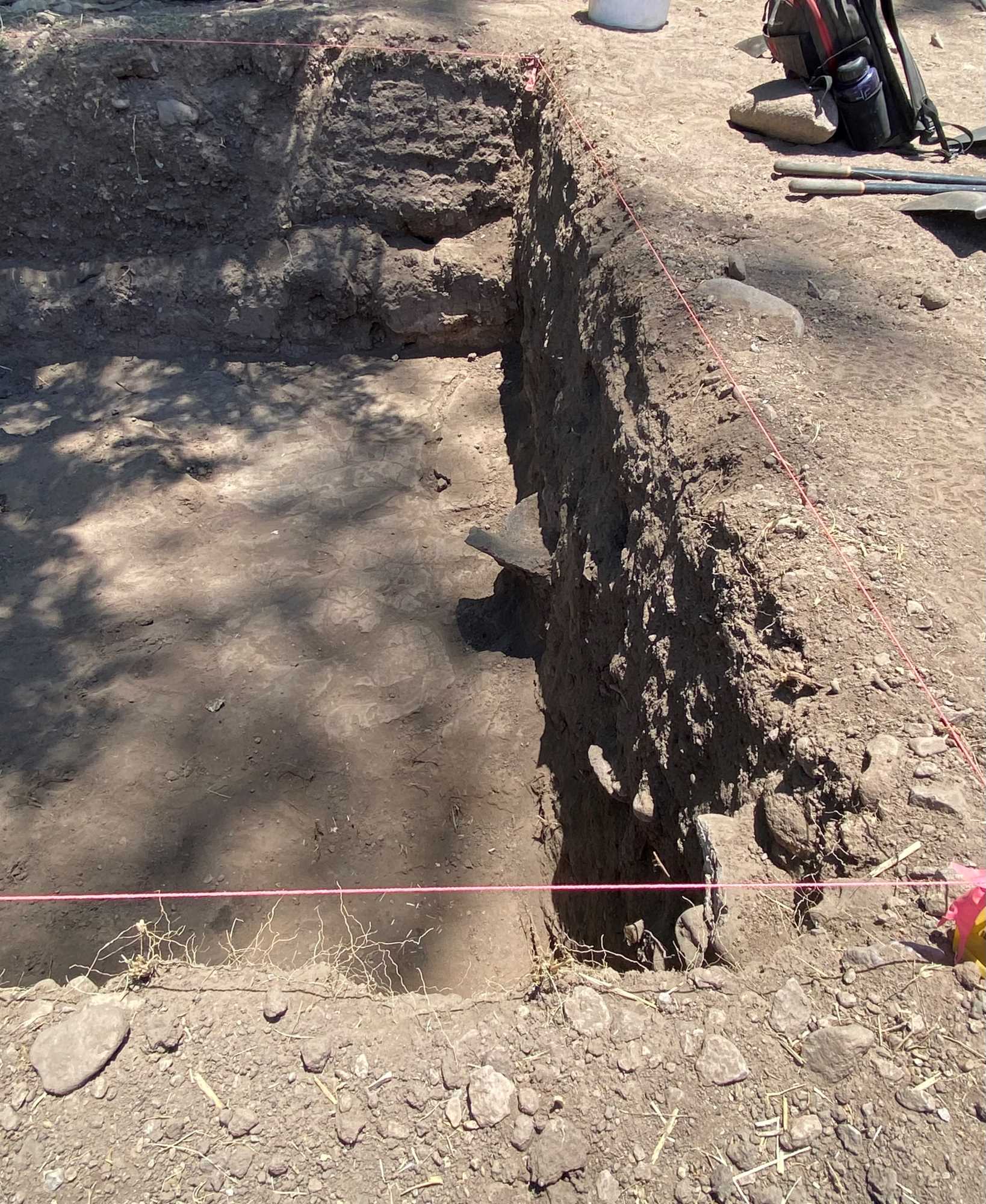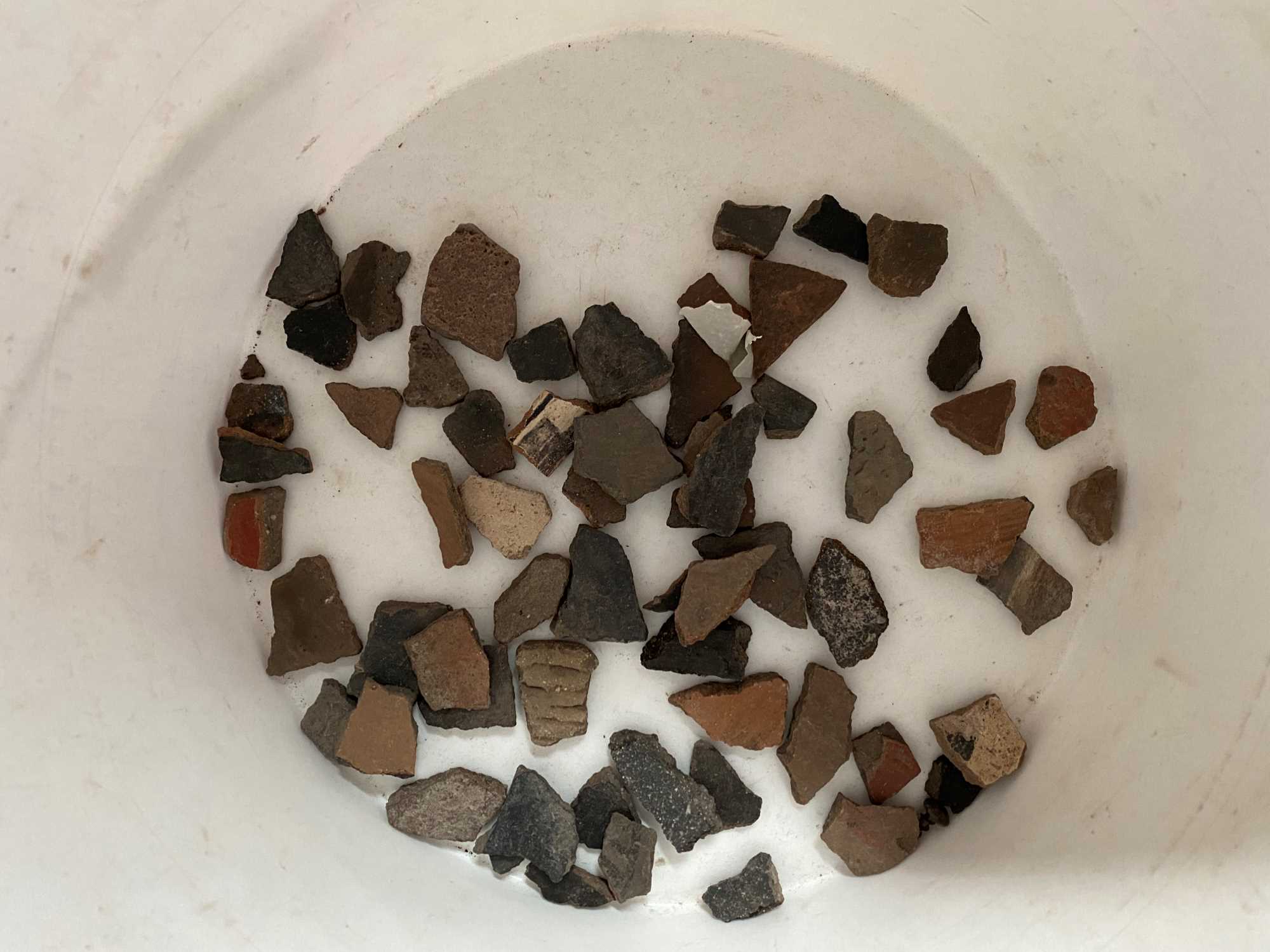- Home
- >
- Preservation Archaeology Blog
- >
- Finders But Not Always Keepers

(June 29, 2022)—“Can we keep this one? It’s not bigger than a quarter, but it’s decorated and pretty.” asks Ashley Tillery, a fellow excavator in Unit 462, inquiring about a small painted ceramic sherd she is holding in her hand as she searches through the ¼” screen looking for artifacts to be collected. It’s a question that we have all asked at least once these past 3 weeks despite knowing the answer almost every time.
At this point in our excavations, the rules for the bagging and collection of artifacts based on their type have been thoroughly ingrained into our brains, but it still feels strange to dump screens full of small ceramic sherds into the piles of dirt to be backfilled at the end of our excavations. Everyone working at the Gila River Farm Site can tell you that ceramics only get collected if they are bigger than a quarter, regardless of how decorated or intricate the design is. The same rule applies to historic glass. This rule, though flexible at times, is in contrast to the bagging and collection rule for flaked stone, bones, and any shells found at the site, which essentially boils down to “bag every piece, regardless of size.”

Although it has been an adjustment to not collect and label every archaeological material in sight, including those found in trenches, outside our unit, or stuck within the surrounding walls, there is a good explanation as to our learned selectivity, which relates back to the tour we were given of the Arizona State Museum (ASM) collections back in Tucson. We were able to see how the curation crisis is affecting museums across the United States, including ASM, and how we, as budding archaeologists, can do our part to not over-contribute to the disproportionate relationship that exists between museum collections and the amount of space and staff there are to manage them.

Another curation-related reason for our “keeper” rule about sherds is the simple fact that we are only able to obtain limited information from them. Often referred to as “undiagnostic,” small sherds cannot be positively identified as belonging to a specific group or time period if they are smaller than a quarter (in most cases). If a small sherd somehow makes it through the collection process and winds up in one of our ceramics labs, we will once again be asked to sort through the bagged artifacts to ensure they are all larger than a quarter—and if they are not, then they will be placed into a bucket to be returned to the site and placed in the backfill pile.

The happy ending to our selectivity—other than relieved museum staff—is reminiscent of the whole mission of Preservation Archaeology at Archaeology Southwest. By not collecting every artifact that crosses our path, we are following the idea that we are not disrupting the site any more than necessary as we work to understand the space and how people used it. Artifacts that are too small to make a definitive conclusion are not unnecessarily collected, handled, washed, and sent to a museum where they will remain in a collections bin on a shelf in ASM for the foreseeable future. Instead, I reassure myself by understanding that these artifacts are going to remain where the people who used them left them.